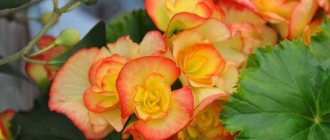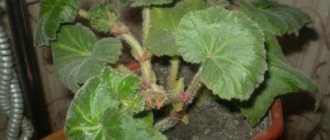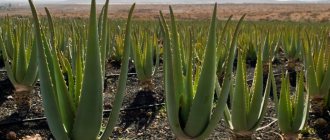Calla is the most exquisite and beautiful flower from the Araceae family. Thanks to its variety of colors, the plant has become very popular for growing at home. South Africa is considered its homeland. In its natural habitat it grows along the banks of water bodies or in marshy areas. The plant gained popularity not only due to the unusual shape of the flower and large, wide leaves, but also because of its ease of care. Callas can be placed in the open ground at the dacha, shading them from the sun and covering them for the winter.
Description and characteristics of the flower
Calla is a greenhouse or wedding flower that, with careful care, will decorate any corner of the house. For home cultivation, snow-white or colored varieties are usually used. And it is called wedding because of its widespread use in making bouquets for brides.
The stem is tall, rich green. Depending on the variety, the flowers are white, pink, purple, burgundy, yellow or black.
Indoor callas are a low shrub with heart-shaped dark green leaves and tall peduncles, turning into a tubular single-petal inflorescence with a bright yellow cob inside. The sail-shaped petal gently covers the cob, making the flower look elegant and beautiful.
Transition of the plant into the resting phase
After a plant with any type of color fades, its watering should be reduced. After two to a month and a half, stop watering altogether, since at this time it enters the resting phase. There is no need to do this abruptly, as the transition should be smooth. During this time, the tubers of the plant will ripen, after which the leaves can be cut off. White or colored calla flowers will remain in the resting phase for 4-5 months, approximately from October to February. This period and date are approximate, as they depend on many conditions and are individual for each plant.
Popular varieties and species for home growing
All callas are divided into two groups: tuberous and varieties with tree-like rhizomes.
Ethiopian calla is a tall plant; with good care it can grow up to 1 meter in height. It has a powerful tree-like rhizome, glossy dark olive leaves and tall peduncles with flowers of various colors. The color depends on the variety. The main difference of this species is the ability not to shed foliage during the dormant period. The most popular varieties:
- Amethyst. A tall variety, depending on conditions it grows up to 120 cm. The flower stalks are tall, dark purple in color with a delicate aroma of sea breeze. The variety is suitable for home interior decoration.
- Calla lilies Vermeer. A flower of unforgettable beauty, grows up to 70 cm. The bright golden ear is covered with a purple blanket with a snow-white edging. The variety is popular due to its beautiful flowering and decorative foliage. The leaf blade of the flower is dark green with white splashes.
Tuberous calla lilies Elliott and Remani. This group is short growing with narrow soft green leaves and a snow white to dark burgundy spathe. The most common types for home cultivation:
- Chameleon. The variety is medium-sized, odorless, grows up to 60 cm in height. The plant has soft green, heart-shaped foliage with white flecks, from which rises a flower stalk with a peach-colored flower. Flowering lasts for a long time - from June to September.
- Evening. A low shrub with thin leaves and a tall peduncle with satiny black and purple flowers.
- Indian summer. The variety has bright red flowers with a garnet hue.
- Black-eyed beauty. Lemon blanket with a creamy shade. It looks harmonious against the background of narrow soft olive foliage with a small splash.
All these varieties and species are easy to care for and suitable for growing at home. But in order for the plant to bloom and delight with its beauty for a long time, you need to make a little effort to create favorable conditions close to natural ones.
Description of the plant
The calla flower itself has a rather interesting shape. This is clearly visible in a photo with any type of plant. A distinctive feature is the peculiar twisted configuration of the petal, which makes it stand out from the background of many other flowers growing in the garden. Calla, also known as Zantedeschia, belongs to the araceae family and is the closest relative of the calla lily, which spreads in marshy areas throughout almost the entire northern hemisphere of the Earth. This flower has other names such as “Richardia” or “Ethiopian calla”. Zantedeschia came to us from the tropics of South Africa, where it begins to bloom in winter, which is quite warm in these places.
But in our climate this plant blooms well in spring and summer. It does not require special agricultural technology; you just need to follow certain rules that will allow calla lilies to delight their owners. For those who grow dahlias, it will be much easier, since caring for these plants is almost identical. You just need to master some rules of agricultural technology. True, dahlias are found more often in personal plots, but callas are firmly gaining their place in domestic floriculture.
How to grow calla lilies at home
Calla is an unpretentious perennial flower that grows well both in open ground and at home. To achieve its flowering, it is necessary to surround the plant with care and love.
Location and lighting
For good growth and development, callas need a lot of bright, diffused light. The duration of daylight hours should not be less than 12 hours. In winter they are provided with additional artificial lighting. Because with a lack of light they lose their decorative effect:
- leaf petioles are elongated;
- flowering does not occur;
- the bract becomes discolored.
The best place for a flower is the western or eastern side. In the south, calla lilies may get leaf burns, and in the north they will grow, but if there is insufficient lighting, you may not be able to wait for flowering.
Watering and growing conditions
Each type of calla lilies requires its own temperature and humidity.
For callas with tree-like rhizomes, during the growing season the air temperature should be within 20 degrees. After flowering and during hibernation, it is reduced to 13 degrees. Such conditions must be maintained for two months. This will allow the plant to gain strength for further flowering.
It is also necessary to monitor air humidity. It should be at least 70%. You can spray the leaf plate regularly and periodically, especially in summer, give it a warm shower. In winter, to avoid hypothermia, it is better to install a humidifier or place a flowerpot with a flower on a tray with damp expanded clay or moss.
For tuberous callas, the optimal summer air temperature should be within 24 degrees; in winter it should be increased by 4–5 degrees. This is necessary for the ripening of tubers and the formation of flower buds. Tuberous callas are not susceptible to air humidity, so it is enough to wipe the leaf plate daily with a damp sponge. This procedure will protect the plant from diseases, increase humidity, and also give it a decorative appearance.
Proper watering is one of the main aspects when growing callas, since their growth, development and flowering depend on it.
Tuberous callas when watered are much different from callas with tree-like roots:
- Tuberous plants love moderate watering, which is carried out only after the top layer of soil has dried to a depth of 3–4 cm. To avoid rotting of the root system, excess water must be promptly removed from the pan. 2 months after flowering, watering is reduced to a minimum.
- Callas with a tree-like root system are watered regularly and abundantly, especially during the period of active growth. For good development and long flowering, the soil in the pot must be constantly moist. In winter, watering is reduced to once a week.
Transplantation and feeding
The flower is transplanted once every two years, after a period of dormancy. To do this, prepare nutritious soil, which includes turf and leaf soil, peat and sand in a ratio of 2:1:1:1. Transplant the plant into a larger pot, at the bottom of which a layer of drainage is placed. The flower is placed in the center and carefully covered with prepared soil, making sure that no air cushion is formed. Next, it is watered abundantly and put away in a warm, shaded place for 2–3 days.
The root system should not be deeply buried and left close to the surface of the earth. To choose the planting depth, you need to multiply the diameter of the rhizome by three.
For long flowering and good growth, the plant needs regular feeding. They begin to add it after a period of rest. To do this, use nitrogen-containing fertilizers - once every 10 days to increase green mass. During the period of bud formation and flowering, callas are fed with phosphorus-potassium fertilizers. When applying them, you need to make sure that the fertilizer does not get on the leaves and flowers, as this can lead to the formation of stains and loss of decorativeness.
Features of plant care
This plant, like any other, must be properly cared for. At the same time, the most important feature of calla lilies is that they grow well both outdoors in open soil and indoors in pots. General care rules:
- When planting, calla lilies should not be buried in the soil. Their root system is only slightly sprinkled with soil. This will help prevent rot from occurring.
- Inexperienced flower growers call the flower of this plant a spathe (covering leaf). It wraps itself around the ear of the inflorescence. Real flowers are small in size and do not have an attractive appearance. But they are very fragrant.
- Calla can sprout for quite a long time (about a month). The fact is that first of all it grows roots, and then the sprout itself appears.
- When digging up tubers, it is very easy to damage them, so this procedure should be carried out with great care.
- Interestingly, this plant is called a “living barometer”. The fact is that before rain, air humidity rises, and calla lilies react by forming water droplets at the tips of the leaf blades.
- For planting, it is recommended to use a container with porous walls, especially if we are talking about Ethiopian calla lilies, which also prefers to grow alone (without neighbors). This will allow excess moisture to evaporate.
- The flower lasts approximately 4 weeks.
- Systematic replacement of the top layer of soil in the pot is required. To do this, you need to remove the top layer of soil and put a new one, while trying not to disturb the root system.











